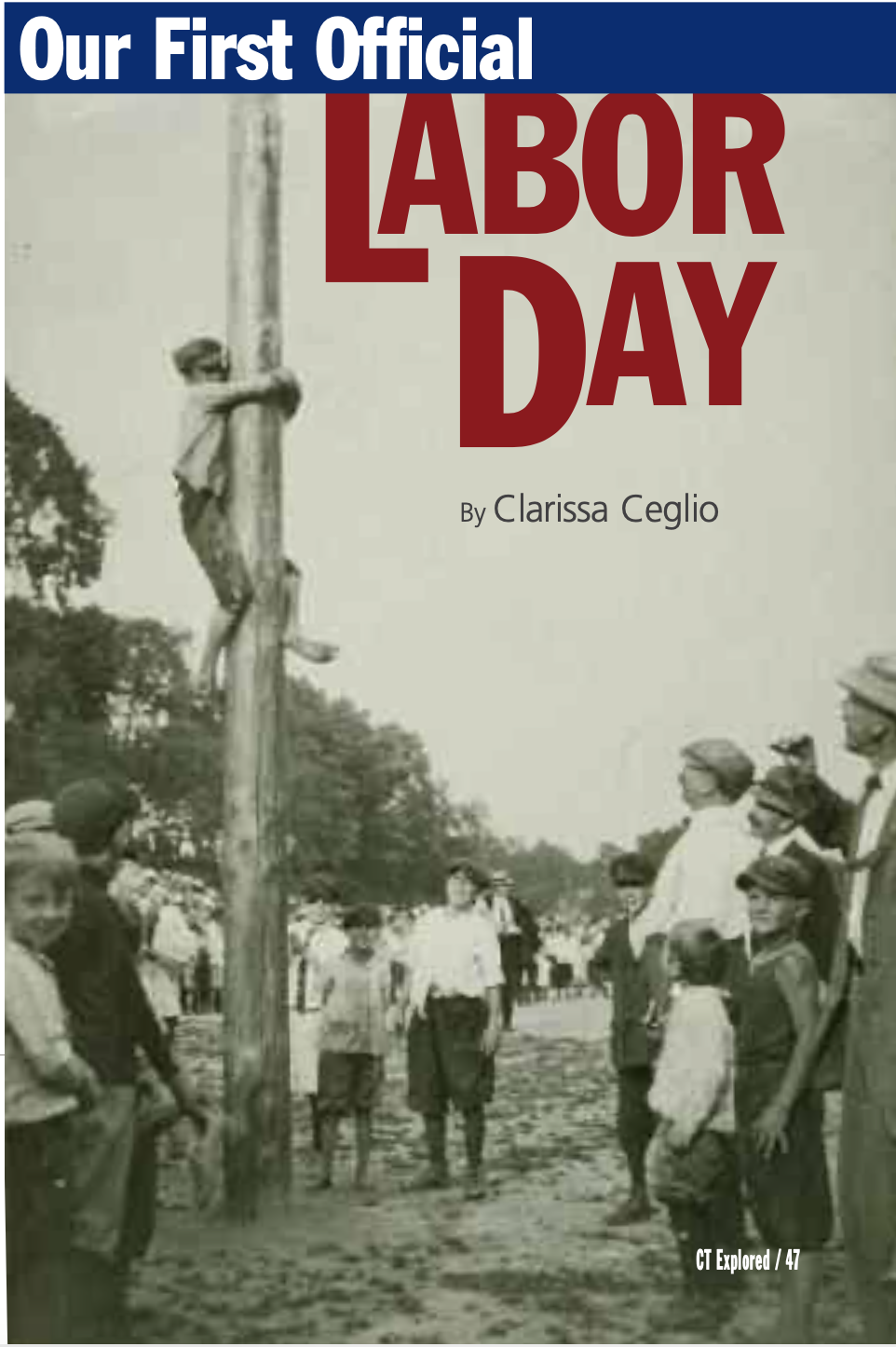
A boy shinnies up a greased pole at a Labor Day picnic in Colt Park, Hartford, c. 1910. Connecticut Historical Society, Hartford, Connecticut
By Clarissa Ceglio
(c) Connecticut Explored Inc. Winter 2013-2014
Subscribe/Buy the Issue!
In February 1889, the Connecticut General Assembly passed a bill making the first Monday of each September a legal holiday. Labor Day, an initiative of the labor movement, had been celebrated in various Connecticut towns in earlier years, but it was not until 1887 that states began making this tribute to workers’ economic and social worth a recognized holiday. Between 1887 and 1890, eight states adopted Labor Day, Connecticut among them, according to the U.S. Department of Labor Web site. More states followed, and Labor Day became a federal observance in 1894. Passage of the law came after a period of nationwide clashes between workers and industry that had culminated in the deadly Pullman Strike in Illinois earlier that year.
The first official celebration of Labor Day in Connecticut was not as glorious as some in the labor movement had hoped. A parade of workers held in the capital city on September 2, 1889, started an hour late and, according to the Hartford Courant, drew a marching corps of “less than four hundred strong.” Speeches, dancing, and celebration followed the parade, which earned little praise from the keynote speaker, Edward King, a trade union activist and member of the New York City Central Labor Union. King declared that he would not flatter the local unions for what he deemed a poor turnout given the large number of wageworkers in the city. The Courant reported that he blamed “…the ‘dudes’ in the shops, who stand on the curbs and see the parade go by rather than march with the boys.” In his speech, King also urged the working women of Hartford to organize.
Meanwhile, an estimated 3,000 people attended a picnic in West Winsted; factory closures marked the day in New Haven. Elsewhere, though, observers reported that the day passed without much notice.
By the early 1900s, Labor Day had become a much grander affair and an occasion for family fun. In addition to a parade, Hartford boasted festivities in Colt Park. In 1913, organizers of the Colt Park celebrations promised readers of the Hartford Courant “a program that will afford pleasure to everyone.” Attendees could picnic, dance to the music of military bands, watch or play baseball at any of the park’s 15 diamonds, listen to speeches, and compete for prizes in athletic events. The latter included everything from a “50-yard dash for fat men of 200 pounds,” for which the victor would receive a $3.50 box of cigars, and a greased pole climb, with a promise of a $3.00 ham for those who successfully shimmied [shinnied?] to the top.
Time, along with countless Labor Day parades, has marched on. The festivities continue, from simple backyard barbeques, road races, and classic-car rallies to agricultural fairs in Goshen, Woodstock, and elsewhere. Yet, of the many continuing traditions that mark the day, one in particular has faded over time. Workers’ unions no longer hold the same pride of place in the public observance that their forbearers helped to create. The day that once celebrated the importance and dignity of workers has become better known for back-to-school sales. To paraphrase a popular union slogan of recent years, it may be time to put the labor history back into Labor Day.
Clarissa Ceglio, a research associate with UCONN’s Digital Media Center, is an editor for ConnecticutHistory.org (where a version of this article first appeared) and a former member of the Connecticut Explored editorial team.
